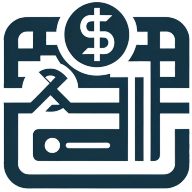3 Success Stories of Implementing New Payroll Technology for Operational Improvement
Navigating the complexities of implementing new payroll technology can be daunting, but with the right approach, it transforms into an opportunity for remarkable operational improvement. This article delves into the successes experienced by companies who took the leap, bolstered by the wisdom of industry experts. Discover how automation, collaboration, and personalized transition strategies can streamline your payroll processes and propel your organization forward.
- Automate Payroll for Efficiency and Accuracy
- Collaborate on Payroll Tech for Successful Adoption
- Personalize HR Program Transition for Success
Automate Payroll for Efficiency and Accuracy
One example I can share as a payroll leader of a new payroll technology or solution being implemented successfully is when we decided to switch to a new payroll software here at Liberty Financing. In the past, we had used spreadsheets and manual calculations, which often led to errors and wasted time. This new software automated a lot of the repetitive tasks like tax and OT calculations and synced easily with our time tracking system!
Since the implementation, we have noticed a big drop in mistakes and have a much faster payroll process. The HR team spends less time on payroll, which allows them to focus on other important tasks. Employees have also noticed the difference, with paychecks consistently arriving on time and without issues! It has made the entire system more efficient and improved both productivity and employee satisfaction.

Collaborate on Payroll Tech for Successful Adoption
At Tech Advisors, we helped a midsize law firm transition to a new payroll technology to improve accuracy and reduce processing time. Before choosing the system, we asked the firm's HR and finance teams for feedback. They shared frustrations with missed deadlines and time-consuming manual entries. We sent a quick survey through SurveyMonkey and confirmed that automation and real-time error checks were top priorities. We then invited a small committee, including department heads, to test two payroll tools and weigh in. Their feedback helped us choose a system that fit their daily routines.
Once the decision was made, we held a video call with our team and theirs to walk through how the new payroll software would help. We didn't just list features--we showed how the software would reduce late payments, flag tax filing errors, and make paycheck corrections faster. One of their HR staff volunteered to try the system first and became our internal champion. She hosted follow-up Q&As and explained the benefits in plain terms to coworkers who were less familiar with tech. That small peer-to-peer effort made a huge difference.
We also scheduled two short training sessions before and after the rollout. Some team members preferred live training, while others wanted a short how-to video they could watch later. We made both options available. Within a month, payroll errors dropped by 40%. The finance team reported having more time for other projects. And best of all, employee trust in the system went up because they felt included from the start. If you want people to adopt a new solution, ask for their input early and show them how it helps--not just the company, but their day-to-day work.
Personalize HR Program Transition for Success
When we implemented a new HR program to manage employee leave requests, I prioritized making the transition as smooth as possible. Our previous system was clunky, and employees frequently complained about delays and confusion.
To ensure a successful integration, I began by meeting with a small group of employees to understand their concerns and what they hoped the new system would address. This input influenced our implementation plan, ensuring that the program met actual needs.
After introducing the program, I conducted informal drop-in meetings for employees to ask questions and discuss their experiences. The personal touch made a significant impact. One afternoon, an employee noted how much easier it was to navigate the new system than the old one, confirming that our strategy was effective.
This experience demonstrated the value of listening and remaining present during transitions. For anyone considering new HR technologies, I recommend focusing on understanding your team's needs and remaining available to support them during the transition.



